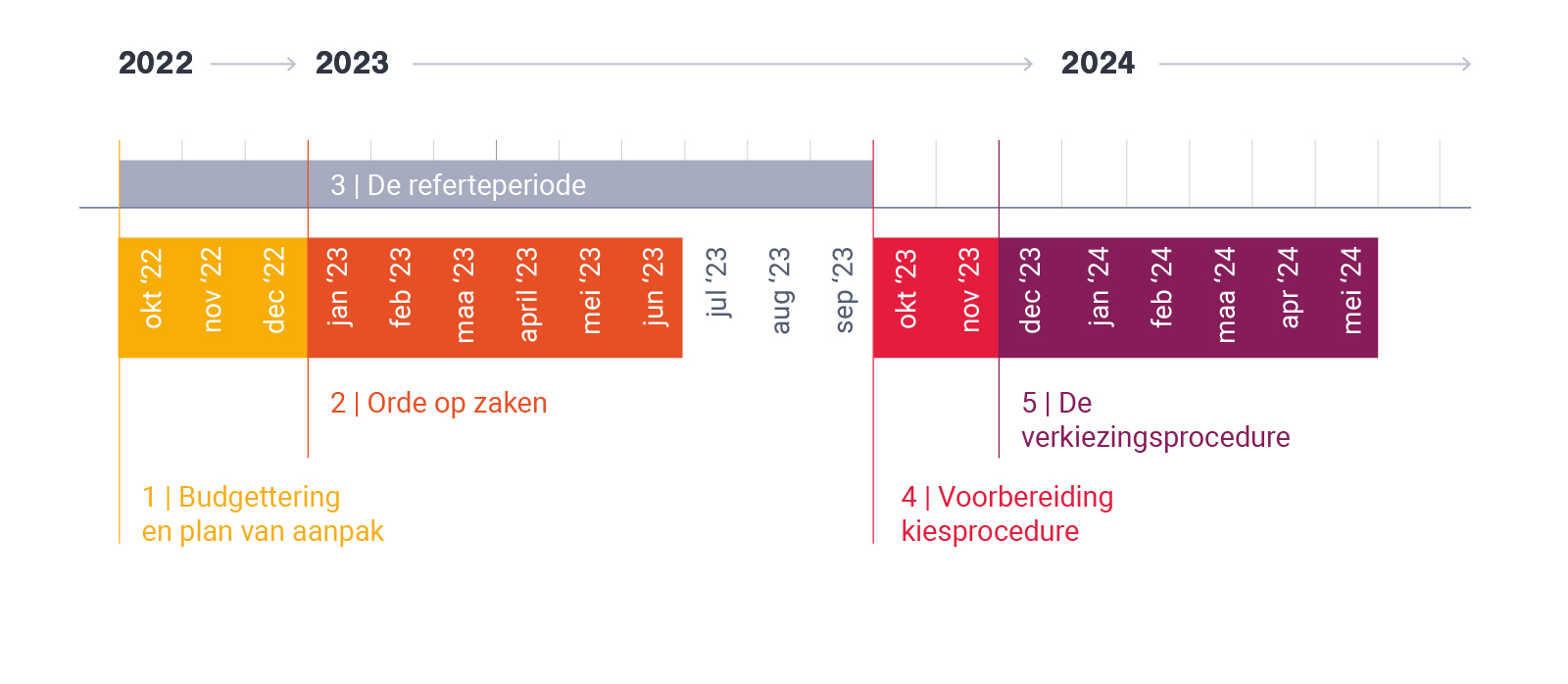Social elections on the horizon: everything you need to know
In the realm of labor relations, social elections play a crucial role in safeguarding the interests of employees and fostering participation within enterprises. These elections form the foundation for establishing or renewing works councils (WC) and committees for prevention and protection at work (CPPW), in which both employers and employees are represented. With the upcoming nationwide social elections from May 13 to May 26 2024, it is an opportune moment to emphasize the importance of this process.
𝗦𝗼𝗰𝗶𝗮𝗹 𝗲𝗹𝗲𝗰𝘁𝗶𝗼𝗻𝘀, 𝘄𝗵𝗮𝘁’𝘀 𝗶𝗻 𝗮 𝗻𝗮𝗺𝗲?
Social elections are an essential part of the democratic process within enterprises. They take place in more than 7,000 enterprises, ranging from private companies with commercial purposes to non-profit organizations, such as social and health services. They are intended to give employees a voice in important decision-making processes within the organization. The number of employees in the technical business unit (TBU) within a specific reference period determines whether social elections are mandatory. Enterprises that exceed a certain employment threshold are required to organize them. Specifically, this means that companies that usually employ an average of at least 50 employees must establish a committee for prevention and protection at work (CPPW), while companies with an average of at least a 100 workers must additionally create a work council.
𝗣𝗮𝗿𝗶𝘁𝗮𝗿𝗶𝗮𝗻 𝗿𝗲𝗽𝗿𝗲𝘀𝗲𝗻𝘁𝗮𝘁𝗶𝗼𝗻: 𝗮 𝗯𝗮𝗹𝗮𝗻𝗰𝗲 𝗯𝗲𝘁𝘄𝗲𝗲𝗻 𝗺𝗮𝗻𝗮𝗴𝗲𝗺𝗲𝗻𝘁 𝗮𝗻𝗱 𝗲𝗺𝗽𝗹𝗼𝘆𝗲𝗲𝘀
The WC and CPPW serve as bodies for participation in which both management and employees have a say. They are composed on a paritarian basis, meaning that both parties are equally represented (the employer must never have more representatives in number than the employees). Management appoints members of its delegation from supervisory staff, while employees elect their representatives through social elections. Employees have the right to stand as candidates and are then elected through voting. Note that not all employees are eligible to stand as candidates. Employees must meet eligibility criteria.
𝗧𝗵𝗲 𝗰𝗵𝗿𝗼𝗻𝗼𝗹𝗼𝗴𝘆 𝗼𝗳 𝘀𝗼𝗰𝗶𝗮𝗹 𝗲𝗹𝗲𝗰𝘁𝗶𝗼𝗻𝘀: 𝗮 𝗱𝗲𝘁𝗮𝗶𝗹𝗲𝗱 𝗼𝘃𝗲𝗿𝘃𝗶𝗲𝘄
The above chronology for clarification (Liantis, 2023)
The electoral procedure for social elections extends over a total of 150 days. There are two crucial dates:
– Day X: On this day, the employer announces the date on which social elections will take place within the organization.
– Day Y: This marks the actual day of voting
The procedure effectively begins 60 days before X, during which the employer sends a notification about the social elections to key entities such as the Federal Public Service, trade unions, and the organization. This is followed by notifications on X-35 and X, when the employer is again obligated to notify the abovementioned entities. These notifications include details such as the number of available mandates, the technical business unit (TBU), and the distribution of personnel into categories such as workers, employees, youth, executives, and supervisory staff.
After Day X, it is the turn of the trade unions to submit candidate lists by X+35. At that point, the employer essentially has an idea of whether there are enough candidates and if he can (partially) terminate the elections. This is followed by a period in which the employer must carry out various administrative tasks, including assembling the electoral board (chairperson, secretary, assessors), obtaining the necessary physical materials, summoning employees, and printing and folding ballot papers in a specific manner.
These carefully planned steps are essential for the social election’s smooth conduct, allowing both employers and employees to participate in the process in a transparent and democratic manner.
𝗣𝗿𝗼𝘁𝗲𝗰𝘁𝗶𝗼𝗻 𝗼𝗳 𝗰𝗮𝗻𝗱𝗶𝗱𝗮𝘁𝗲𝘀: 𝗲𝘀𝘀𝗲𝗻𝘁𝗶𝗮𝗹 𝗳𝗼𝗿 𝗳𝗮𝗶𝗿 𝘀𝗼𝗰𝗶𝗮𝗹 𝗲𝗹𝗲𝗰𝘁𝗶𝗼𝗻𝘀
One of the social election procedure’s essential aspects is the protection of candidates against unjustified dismissal. Unless a compelling reason has been accepted in advance by the labor court, or economic/technical reasons recognized have been recognized by the joint committee, candidates may not be dismissed. This measure is vital in order to protect employee representatives and maintain the integrity of the electoral process.
A notable aspect of this protection is that it takes effect on X-30, long before it is known who will stand as candidates. This period is known as the ‘occult’ period because during this phase, everyone enjoys protection from dismissal. Even someone who initially had no plans to stand as a candidate but is nevertheless dismissed, is able to announce that they meant to stand as a candidate to claim the additional protection and compensation associated with it.
𝗢𝗯𝗹𝗶𝗴𝗮𝘁𝗶𝗼𝗻𝘀 𝗮𝗻𝗱 𝗰𝗼𝗻𝘀𝗲𝗾𝘂𝗲𝗻𝗰𝗲𝘀: 𝘁𝗵𝗲 𝘀𝗲𝗿𝗶𝗼𝘂𝘀𝗻𝗲𝘀𝘀 𝗼𝗳 𝘀𝗼𝗰𝗶𝗮𝗹 𝗲𝗹𝗲𝗰𝘁𝗶𝗼𝗻𝘀
Every employer that meets the employment threshold is required to organize social elections or at least initiate the procedure. This is the case even when there appears to be no interest from employees to stand as candidates. A company that fails to initiate the procedure, although it is obligated to do so, risks a criminal fine of 800 to 8,000 euros or an administrative fine of 400 to 4,000 euros. Both fines are multiplied by the number of employees involved with an absolute maximum of 100. Moreover, enterprises may be required to organize the social elections outside the designated period.
In conclusion, social elections play a crucial role in promoting democracy and participation within organizations. They are essential for safeguarding the interests of employees and achieving balanced decision-making between management and staff. Compliance with legal obligations by employers, along with active promotion of employee participation, will not only contribute to a fair work environment but also to a stronger and more harmonious work climate in which all stakeholders feel heard and represented.
